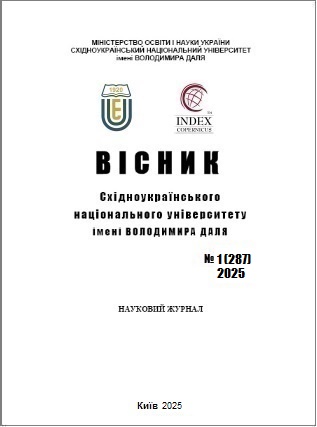Greenhouse gas emissions from fossil fuel-based power generation systems
DOI:
https://doi.org/10.33216/1998-7927-2025-287-1-39-45Keywords:
ecology, carbon dioxide, fossil fuels, electricity, gases, emissionsAbstract
Global warming is a recognized threat to the stability of the Earth’s climate. The only way to control global warming is to control the concentration of greenhouse gases in the atmosphere. There are only two ways to do this: replace high-carbon fuels with low-carbon or carbon-free fuels; and produce and use energy more efficiently. The concentration of carbon dioxide in the atmosphere has reached its maximum level for the first time in human history, and 67% of greenhouse gas emissions are caused by energy and the burning of fossil fuels. High levels of carbon dioxide were observed about 3-5 million years ago, when the Earth’s temperature was several degrees higher than it is now. In particular, in 2018 this figure was 405.5 ppm. Usually the amount of CO2 varies depending on the season, with the highest values recorded in the northern hemisphere in spring and early summer. However, the average annual concentration of CO2 is steadily increasing. Scientists attribute this to the use of solid fuels, since 67% of greenhouse gas emissions are caused by energy and the burning of fossil fuels, which leads to an increase in the average global temperature. Given the urgent need to strengthen environmental control over the state of the air, and to find ways to reduce the concentration of CO2 in the atmosphere, it is necessary to find new ways to solve this situation and develop monitoring systems for controlling atmospheric emissions. These measures will allow to significantly reduce the volume of emissions into the atmosphere. Compared with Carbon Brief's emission inventory results, the average percentage difference of our algorithm in China is 22.15 %, while the average percentage difference of the OCO-3 Snapshot Area Mapping Observation Model (SAM) is only 6.11 %. In the U.S., the average percentage difference compared to the hourly emission inventory data EPA (the US Environmental Protection Agency) reaches 16.67 %. This result coincides with the average deviation of 15.1 % in the Gaussian plume model for the U.S. power plants. In the European thermal power plant emission estimates, the average percentage difference is about 25 % lower compared to the proxy emission values. Sensitivity tests on planetary boundary layer heights (PBLH), the derived regional background, and wind speeds suggest our divergence method is quite robust. This has been demonstrated to be a quick and effective method for estimating carbon emissions from coal-fired power plants.
References
1. IPCC (2022), Emissions Trends and Drivers. In IPCC, 2022: Climate Change 2022: Mitigation of Climate Change. Contribution of Working Group III to the Sixth Assessment Report of the Intergovernmental Panel on Climate Change. Cambridge University Press, Cambridge, UK and New York, NY, USA. doi: 10.1017/9781009157926.004
2. Jia, G., E. Shevliakova, P. Artaxo, N. De Noblet-Ducoudré, R. Houghton, J. House, K. Kitajima, C. Lennard, A. Popp, A. Sirin, R. Sukumar, L. Verchot, 2019: Land–climate interactions. In: Climate Change and Land: an IPCC special report on climate change, desertification, land degradation, sustainable land management, food security, and greenhouse gas fluxes in terrestrial ecosystems [P.R. Shukla, J. Skea, E. Calvo Buendia, V. Masson-Delmotte, H.-O. Pörtner, D.C. Roberts, P. Zhai, R. Slade, S. Connors, R. van Diemen, M. Ferrat, E. Haughey, S. Luz, S. Neogi, M. Pathak, J. Petzold, J. Portugal Pereira, P. Vyas, E. Huntley, K. Kissick, M, Belkacemi, J. Malley, (eds.)]. https://doi.org/10.1017/9781009157988.004
3. U.S. Energy Information Administration, Annual Energy Outlook 2021, (February 2021), www.eia.gov/aeo
4. R. Dones, X. Zhou, C. Tian, “Life cycle assessment”, in Integrated assessment of sustainable energy systems in China — The China Energy Technology Program, B. Eliasson, Y.Y. Lee (Eds.), Kluwer, 320-444 (2003).
5. J.F. Van de Vate, L. Gagnon, “Greenhouse gas emissions from hydropower — The state of research in 1996”. Energy Policy, 25(1), 7-13 (1997).
6. R. Frischknecht, N. Jungbluth, H.J. Althaus, G. Doka, R. Dones, S. Hellweg, R. Hischier, T. Nemecek, G. Rebitzer, M. Spielmann, “Overview and Methodology — Data v1.01”, Swiss Centre for Life Cycle Inventories, Duebendorf, Switzerland. www.ecoinvent.ch (2003).
7. R. Dones, X. Zhou, C. Tian, “Life cycle assessment”, in Integrated assessment of sustainable energy systems in China — The China Energy Technology Program, B. Eliasson, Y.Y. Lee (Eds.), Kluwer, 320-444 (2003).

